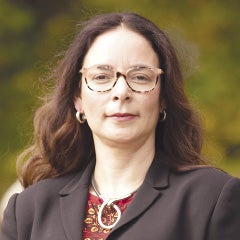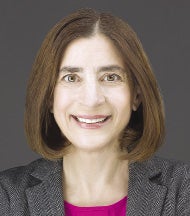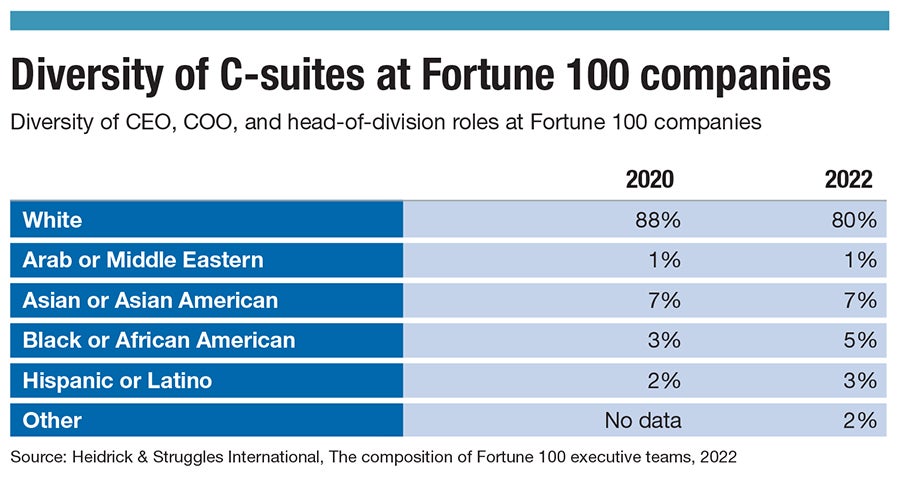Companies must expand their networks & standardize processes to meet diversity, equity, and inclusion targets.
Get Instant Access to This Article
Subscribe to Worcester Business Journal and get immediate access to all of our subscriber-only content and much more.
- Critical Central Massachusetts business news updated daily.
- Immediate access to all subscriber-only content on our website.
- Bi-weekly print or digital editions of our award-winning publication.
- Special bonus issues like the WBJ Book of Lists.
- Exclusive ticket prize draws for our in-person events.
Click here to purchase a paywall bypass link for this article.
Job seekers across the spectrum of industries and career levels are urged to network, build connections, and seek out mentorship from individuals in their communities. Companies do the same, looking to established pipelines of talent from familiar colleges, internal referrals, and local networks.
While that approach is the foot-in-the-door that can help a candidate get a job, it can also exclude many from gaining access to positions, and prevent companies from reaching goals of recruiting talent from a variety of backgrounds.

“The majority of [job] opportunities are shared and gotten through networks and word of mouth,” said Su Joun, principal at Diversity@Workplace Consulting Group in Cambridge, a firm specializing in the implementation of diversity, equity and inclusion practices at the corporate level. “We tell people to look beyond their established networks. That's the number one thing we recommend to our clients.”
Looking outside the typical network does not mean lowering hiring standards, said Joun, but rather ensures that hiring practices do not exclude a large group of potential employees or applicants.
Understanding the community that the company aims to serve should guide the hiring practices, said Valerie Zolezzi-Wyndham, founder and CEO of Promoting Good, LLC in Upton, a consulting firm that leads transformational change processes at organizations. Then, once the priorities are set, an unbiased, standardized process that is conscious of inherent biases is necessary to ensure the process plays out correctly.

That process has to include an unbiased job description, posting of salary range, looking at a job description to make sure it's free of gendered language or language that could be racially coded, said Zolezzi-Wyndham.
“While there has been a commitment to diverse hiring, there have also been many organizations that didn't create processes to codify that goal, and therefore outcomes have not changed,” she said.
In practice, it takes a multipronged approach that starts with hiring but continues to play out in commitment to positive workplace culture for employees from all backgrounds to see success.
“Organizations that are successful in retaining staff are not only prioritizing inclusive hiring, but also workplace culture. The most successful organizations understand that one strategy can’t exist without the other,” said Zolezzi-Wyndham.
What those processes look like depends on the specific organization.
At MassBioEd, a Cambridge life sciences nonprofit, an apprenticeship program that targets the development of the adult workforce across the state helps bring historically excluded people into the industry.
The program, a registered apprenticeship with the state, has a biomanufacturing focus in Central Mass. and partners with companies like AbbVie and Bristol Myers Squibb to train workers and provide staffing. The selected apprentices have 15 weeks of educational classes at Worcester Polytechnic Institute, followed by a year of on-the-job training. Approximately 97% of apprentices earn permanent employment at the end, according to Sunny Schwartz, CEO of MassBioEd.

The program expands the talent pool, rather than poaching workers from other companies, said Schwartz.
“We are reaching into the community deeply and in ways that employers don't know how to. We find new talent that employers might not otherwise,” she said.
The apprenticeship program has been in existence for three years, and in the first cohorts, approximately two-thirds of the apprentices have been people of color from underrepresented backgrounds, according to Schwartz. About 40% of the apprentices were unemployed before entering the program.
“There has been a lot of desire to diversify, but head scratching about how to do it,” said Schwartz. “We are working to find opportunities for people who have been shut out historically.”
The apprenticeship program expands the network that MassBioEd is tapping into to help staff the life sciences industry, with an explicit goal of both diversifying the workforce and finding meaningful career opportunities for community members who have been shut out.
The approach at UMass Chan Medical School in Worcester, the state’s only public medical school, has been to address internal programs to place the importance of diversity, equity, and inclusion work in the center of operations.
UMass Chan, as part of its strategic plan, is aiming to improve health equity and population health. That can’t be done without investing in diverse talent that meets the community where they are, said Milagros Rosal, professor of population and quantitative health sciences as well as vice provost for health equity at UMass Chan.

“These things require a more diverse community of clinicians, educators, researchers, and practitioners. We need to enhance our diversity to gain those perspectives,” said Rosal.
UMass Chan has four distinct programs that focus on improving and centering diversity in research and recruitment. Where recruitment is concerned, acknowledging the importance of diversity is only one step.
Using evidence-based practices to remove as much bias as possible is what makes the efforts successful. In UMass Chan’s cluster hire, which aims to increase the recruitment and retention of individuals from priority groups based on their underrepresentation in medicine, the process involves anonymizing aspects of the application process. Candidates for tenure track positions write research statements focused on the work they aim to do, rather than a reflection on a privileged pedigree of mentorship and education, according to Rosal.
“It makes bias less likely because there's less to frame what you’re reading,” Rosal said.
The remaining steps of the process involve standardized questions and rubrics, she said.
In Joun’s perspective, that work of making the interviewing and screening process more uniform is essential.
“Sometimes we think we are being objective, but we aren't. We ask easier questions, smile more, if we initially like the person. We have to ask the same questions of every candidate for a more equal process,” said Joun.
So far, the process is working at UMass Chan, said Rosal. The university, now in the third cycle of the program, is reaching its recruitment goals of hiring three candidates per year for this specific tenure-track faculty program, distinct from other hiring protocols across the university. The four programs combined go beyond what is an intentionally narrow scope of the Cluster Hire initiative.
The UMass Chan and MassBioEd efforts are so far paying off for both institutions as they look to make good on commitments to fostering a diverse workforce, but there is still tremendous room for improvement on the cultural level, agree Joun and Zolezzi-Wyndam.
“In terms of visible progress, we have seen some, but if the ultimate goal is parity, we still have a long way to go,” said Joun.
As part of the effort to get there, Zolezzi-Wydham believes the focus cannot be just on general hiring, or hiring for entry- to mid-level positions, but rather needs to extend to the top leadership and trickle down.

There are widely held misperceptions about who qualified c-suite level candidates are, said Zolezzi-Wyndham. It has to do with the social networks of top leaders, which remain closed, she said, and prevents people from seeing and knowing individuals from other backgrounds and communities who have the necessary skills and qualifications, but aren’t considered.
“We are far from where we need to be at a senior leadership level,” said Zolezzi-Wyndam. “There needs to be a shift at the cultural level to change that perception.”

